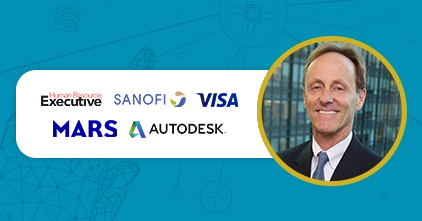Looking to learn about the latest trends in language education? In this article, we discuss the 5 language training trends and what you can do to ensure that your organization keeps up this 2024.

Change is the only constant society can expect as developments continue to shape and revolutionize global industries. But with new technologies, strategies, and information, it’s difficult to identify what trends to look out for and what changes you need to make your organization better than before.
This article will explore the top language learning trends that you should watch out for in 2024. It will then discuss what you should do to keep up with these new changes and trends.
Top 5 Language Training Trends of 2024
Further integration of Artificial Intelligence (AI) in language learning
AI has undoubtedly been a widely discussed subject in recent years, with extensive research being conducted on it. It has evolved into an essential tool that drives our algorithms, learns from a variety of human activities, and acts as a utility that provides convenience to the masses for a variety of tasks.
AI provides many benefits to learners and teachers alike. It allows for individualized and convenient learning paths, immediate translation, fast feedback, and more. From real-time translations to large-language models (LLMs), AI will continue impacting and shaping various industries globally. An article from Randstad highlights, “Innovation and the advancement of AI and other frontier technologies will undoubtedly change the shape of the workforce.”
The advantages of AI will only accumulate throughout the years, making this a relevant trend to look out for. This holds particularly true in the field of language education.
But it’s important to remember that AI is just that: a tool. It can’t replace the importance of the human touch in learning. Nonetheless, it serves as a useful aid that can help learners and organizations in the long run.
Learning how to adapt and integrate AI into one’s daily life will be essential, especially in the coming years.
Using assessments in measuring program effectiveness
With the development of new technologies and the changes caused by the global pandemic, companies are more invested in Learning and Development (L&D) now than ever before. HR departments must measure the effectiveness of the programs they put in place due to several challenges, including the lack of data literacy, the overwhelming number of upskilling programs to choose from, and more. Proper evaluation of program effectiveness is imperative.
For organizations will language upskilling programs, L&D teams are turning to language assessments as a solution. By using assessments, whether done in the initial, mid, or end stages of the program, organizations can better identify the extent to which learners were able to reach their language goals and quantify their skills. They can then make informed decisions about their programs’ effectiveness. This saves them resources and time in the long run.
These assessments can help companies understand just what is needed to help their employees thrive in a world and market that’s constantly changing.
Higher preference for nano-learning and microlearning

Microlearning, otherwise known as nano-learning, is another strategy that learners benefit from. It involves dividing complex topics into small, specific “chunks” which take 5 – 10 minutes to complete.
With a never-ending stream of content available to the masses, people have begun to find it difficult to focus on tasks. One article shows that “the average attention span of Gen Z individuals was only about eight seconds,” thus contributing to a shorter retention rate. But this problem isn’t limited to the younger generations. So with this information, how does this relate to language learning?
Microlearning pairs well with language training because of its many benefits, especially for those who are too busy to take traditional classes. It helps provide tailored training to learners while improving retention and engagement rates. Learners can also access specific language topics that they need at their convenience. This is a definite perk for those with hectic schedules or those who don’t work in a traditional office set-up.
In addition, since language and communication skills are practical skills, learners can immediately apply what they have learned in their everyday lives.
Using technology to create immersive learning experiences
One of the larger impacts of the COVID-19 pandemic is the shift of learning to the digital scene, which is proven by the rise of blended learning platforms and the demand for online courses in companies and schools. Although providing access to a vast amount of learning resources helps, a key aspect of an effective learning strategy involves interaction and communication. Consider this: How else can learners practice their listening and speaking skills?
The importance of having immersive learning experiences in language education isn’t anything new. A unique approach to teaching, one that allows for creative expression, immersion, and collaborative learning, helps learners better understand their lessons and their connection to the world around them. With the right digital tools, trainers and teachers can create realistic scenarios and conversations, enabling learners to participate and learn more from them, whether online or face-to-face.
It’s hard to miss interesting technologies like Virtual Reality (VR) and Augmented Reality (AR). However, when it comes to catering to big groups of learners—which is the case for most companies and schools, interactive classroom technology tools can be a better solution.
Virtual classroom technology (VCR) has been a popular choice of organizations when it comes to digital learning. VCR simulates realistic classroom experiences through various online means, such as chat, video conferencing, multimedia sharing, and so much more.
By using VCR, trainers and teachers can extend language learning beyond the walls of a training room or classroom, and create an online environment for learners to practice what they’ve learned.
For distance or asynchronous learning especially, this tool serves as a viable solution to create an accessible and flexible learning environment, allow uninterrupted learning, and ensure that the human touch is present in the process.
Given these benefits, the use of VR, VCR, and similar tools to create immersive language learning experiences will only continue to grow.
Engaging learners through the gamification of learning
The development of gamified learning is another trend that is expected to grow in the upcoming years. Gamification is the use and application of game-like elements and mechanics—such as badging, rewards & point systems, and more—in training or teaching. The best part is that one can experience many benefits from using this strategy in digital learning, such as engaging learners, allowing them to retain information better, and increasing motivation.
However, companies are not the only ones who can see the benefits of gamified learning! Colleges can also benefit from adapting to this trend since these strategies can be used at almost every language and grade level.
And what do their students gain from building these skills? They earn a significant advantage that makes them stand out in the job market, which is seeing a growing demand for multilingual talent.
Overall, gamified learning is a strategy that will continue to remain relevant in the years to come while also helping learners gain the skills they need to thrive and compete in the 21st century.
Next Steps: Going Beyond Trends
What should you do now? Considering these rising language learning trends, you should look for solutions that encompass these trends and allow your employees or students to grow as well.
As a trusted language learning and assessment solutions provider for global organizations, goFLUENT helps you find the right solutions for your unique language needs or goals.
Harness the power of technology, deliver relevant language content, and leverage the indispensable strengths of human interaction in solving your language learning and assessment needs.



